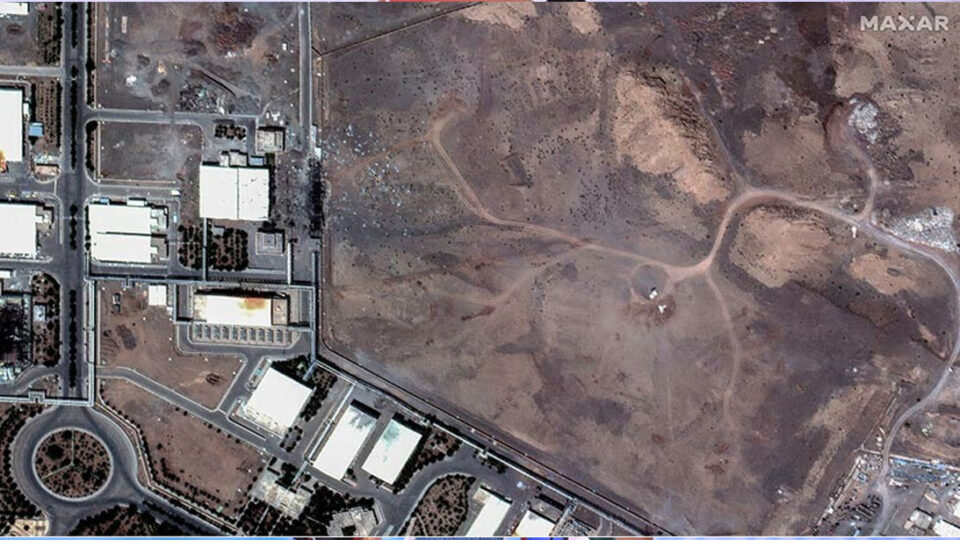US Airstrikes Set Back Iran’s Nuclear Program by Months, Says Intelligence Report
A preliminary assessment by a U.S. intelligence agency suggests that recent U.S. airstrikes on Iran’s nuclear facilities may have only temporarily hindered the country’s nuclear development, rather than completely destroying it. The findings come as a fragile ceasefire, brokered by U.S. President Donald Trump, takes hold between Iran and Israel following 12 days of intense conflict.
Ceasefire Begins After Intense Conflict
On Tuesday, both Iran and Israel indicated that their military confrontation had come to a halt — at least for now. President Trump had earlier announced the ceasefire at 5:00 AM GMT (10:00 AM PKT) and urged both nations to adhere to it.
In the aftermath, civilian restrictions were lifted in both countries. Ben Gurion Airport in Israel resumed operations, and Iranian airspace was also reopened, according to state-affiliated media.
Contrasting Claims on Nuclear Impact
President Trump had claimed that the U.S. airstrikes, which included the deployment of 30,000-pound bunker-buster bombs, had “obliterated” Iran’s nuclear program. However, a preliminary Defense Intelligence Agency (DIA) report appears to present a more measured outcome.
According to multiple sources familiar with the findings:
-
The strikes sealed the entrances to two underground facilities but did not collapse the structures themselves.
-
Some centrifuges remained intact, meaning uranium enrichment could potentially resume in the near future.
-
Iran’s enriched uranium stockpile was not eliminated, and the program may only have been delayed by a few months.
The White House responded by saying the intelligence report was “flat out wrong.”
Reactions from Regional Leaders
Israeli Prime Minister Benjamin Netanyahu stated the airstrikes had eliminated “two existential threats” — the danger posed by Iran’s nuclear ambitions and its missile capabilities. He emphasized Israel’s readiness to prevent any resurgence of Iran’s nuclear efforts.
Iranian President Masoud Pezeshkian, meanwhile, hailed the end of the conflict as a “great victory” and indicated a willingness to resolve broader tensions. He reportedly conveyed to Saudi Crown Prince Mohammed bin Salman that Tehran remains open to dialogue with the United States.
US Mediation and Tensions Within the Truce
The ceasefire deal was mediated directly by President Trump, with input from both Israeli and Iranian contacts. However, the truce appeared fragile, with both nations initially slow to confirm their acceptance and accusing each other of early violations.
President Trump, expressing frustration with the ceasefire breaches, particularly criticized Israel’s response. He reportedly urged Israeli leadership to “calm down” and confirmed that he had instructed Israel to halt further strikes.
Wider Impacts and Casualties
-
The 12-day conflict began on June 13, when Israel launched airstrikes on Iranian nuclear sites, also targeting key Iranian military figures.
-
Iran responded with missile barrages on Israeli cities and military installations.
-
Iranian officials report 610 fatalities and 4,746 injuries from Israeli strikes.
-
In Israel, 28 people lost their lives, marking one of the rare occasions Iranian missiles overwhelmed its air defense systems.
Despite the destruction, global markets reacted positively to news of the ceasefire. Oil prices fell, and stock indices rose, reflecting eased concerns about disruptions in oil supply from the Gulf.
Looking Ahead
While military leaders on both sides described the ceasefire as marking the end of a significant chapter, there is cautious optimism. Israeli military chief Eyal Zamir noted that the military would now refocus on operations in Gaza, while Iran’s leadership warned that it would continue to defend its sovereignty.
As diplomatic efforts continue, the stability of the ceasefire remains uncertain. However, President Trump’s role in mediating the truce underscores the continued influence of the United States in navigating Middle East security challenges.

